Ask anyone on the street what tech trend has dominated the past year, and there’s a pretty good chance they’ll respond, “AI.”
The buzz around artificial intelligence (AI) has been intense, but one type of AI has gotten more attention than all the rest: generative AI.
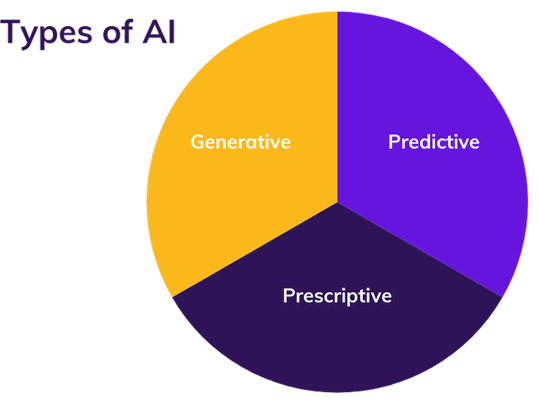
If you’re not up-to-date on the types of AI, this primer on generative AI can get you up to speed.
Table of Contents
What is generative AI?
As its name implies, generative AI is artificial intelligence that can produce an original piece of output in response to a prompt. This might be text, imagery, audio, or other types of media. Hatch Assistant is an example of a generative AI tool that can be used to handle speed to lead, appointment confirmations, and do follow up.
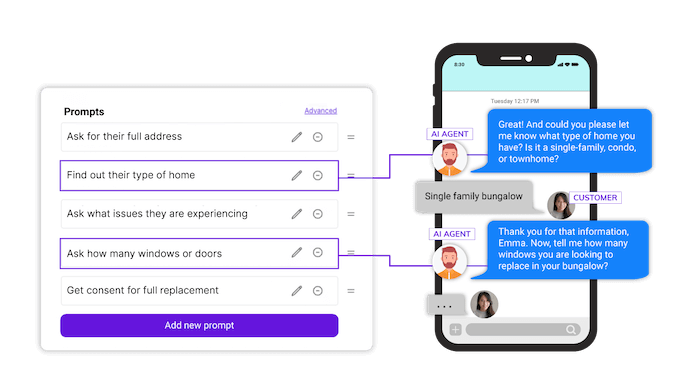
Generative AI tools, like Hatch Assistant, create new output based on a prompt. Give it a try!

How does generative AI work?
Now if you’re wondering how generative AI works, the answer gets a bit more complex. To better understand it, let’s look at ChatGPT as an example.
The process of creating ChatGPT began with collecting an absolutely massive dataset— around 45 terabytes of data, including text—from across the internet. This is why ChatGPT is also considered a large language model (LLM).
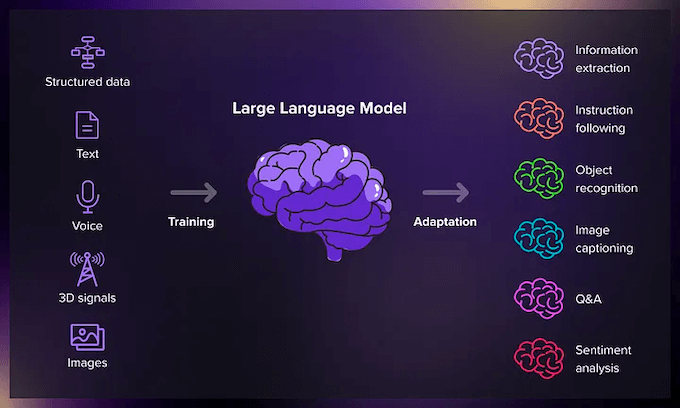
Image source
Its creators fed all the data into ChatGPT, which processed it and picked up on patterns in the written content. By analyzing this giant dataset, ChatGPT started identifying how we put words together to form sentences and thoughts.
So now, ChatGPT has the ability to not just understand questions we ask it, but also to “think” and create its own answers, forming sentences by taking an “educated guess” about the next word or phrase based on its learnings from the dataset it consumed.
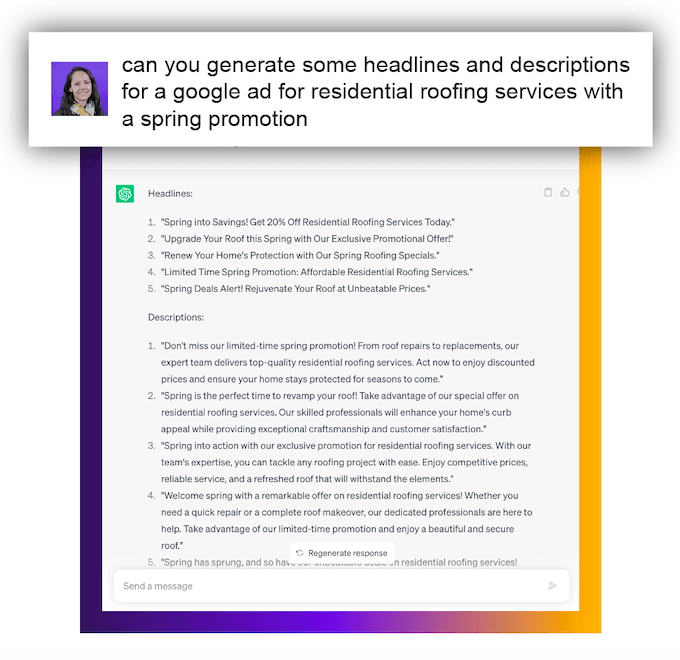
You can find more ways to use ChatGPT for home improvement businesses here.
To refine its outputs further, ChatGPT’s human trainers continuously assess its answers and provide feedback. These trainers read and rate ChatGPT’s output, ranking its responses to a particular prompt to help hone the model.
As ChatGPT gets feedback from humans, it grows more sophisticated in its ability to write like us. Anyone who’s tried the tool has seen the impressive results firsthand.
Generative AI vs predictive and prescriptive AI
While ChatGPT has kept generative AI firmly in the spotlight for the past year or so, other types of artificial intelligence can also help you optimize your business. What are the differences between generative, predictive, and prescriptive AI?
Generative AI
As we’ve already outlined, generative AI can create something new based on existing content or data that has been processed. Whether you want to draft a follow-up email, write some custom code for your website, or whip up a handful of social media images, a generative AI tool can help.
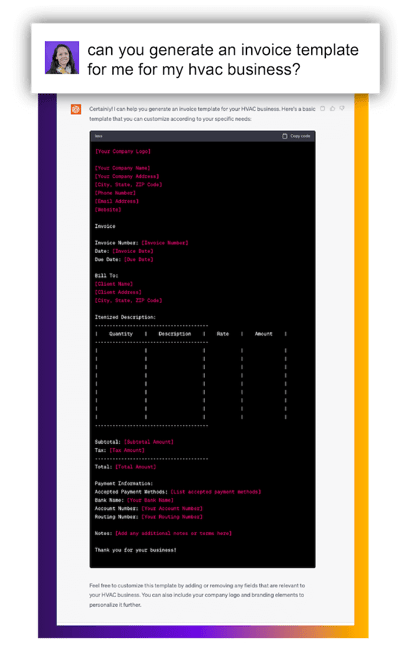
Predictive AI
Predictive AI can assist with things like business forecasting, inventory or supply chain management, or customer acquisition. Predictive AI tools look through past data you’ve given it access to, identify patterns, and use that information to make predictions. Predictive AI can even help with machinery maintenance, such as letting you know when an HVAC system may need a particular service or part replacement. This is actually a current HVAC industry trend.
Prescriptive AI
Prescriptive AI relies on past data to make inferences about future trends, just like predictive AI does, but it also provides feedback on the next steps you should take according to its predictions. For example, a prescriptive AI solution could help you plan routes for your service trucks, optimizing based on each technician’s schedule and local traffic patterns.
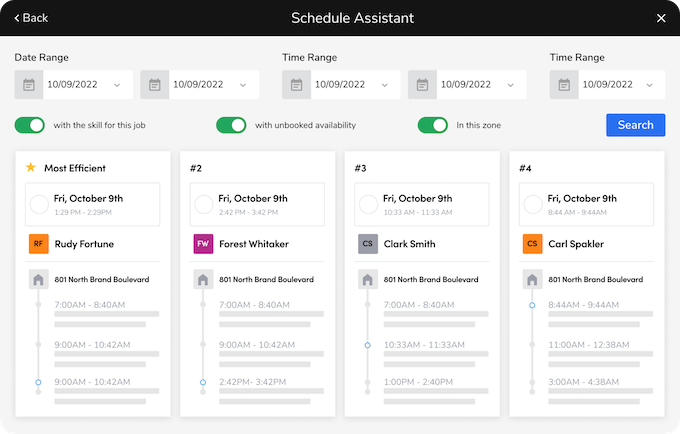
A tool like ServiceTitan’s dispatch software helps you optimize routes and schedules for each team member. Image source
5 ways to use generative AI for contractors
Ready to put generative AI to use in your business? The AI space has exploded in recent years, and there are dozens of AI tools and solutions for you to explore designed to support all facets of your business.
To help you get the most out of AI, here are five ways you can use generative AI for your contracting business.
1. Improve prospect and customer response times
In the world of home services, a speedy response is essential. Reducing your lead response time to 5 minutes can boost your contact rates by 900%. And your existing customers expect quick attention, too; 46% of customers want to hear from a business in four hours or less.
Generative AI can help ensure you provide prompt customer service every time. A tool like Anthropic’s Claude can be trained to handle basic customer service requests and sales-related questions. It can even “learn” when to get a real person on your team involved to handle trickier questions.

Image source
2. Enhance writing across your team
Writing does not come naturally to everyone. Fortunately, AI tools are taking us way beyond the era of simple spell check. Today, generative AI tools can help you draft anything from compelling social media copy to a persuasive email to a new lead.
ChatGPT is perhaps the most well-known generative AI text solution. But there are more tools, like GrammarlyGo, that are designed to help you improve your writing output.
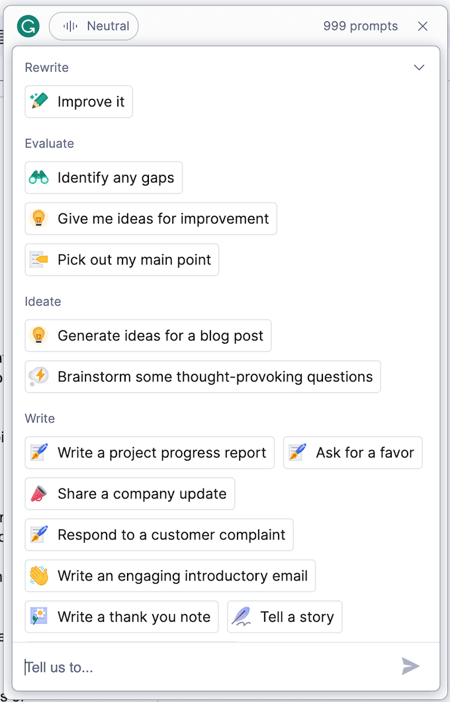
Image source
Like with ChatGPT, you can provide a basic prompt to GrammarlyGo and receive a draft in seconds. You can then use its simple editing and rewriting prompts to refine the original draft, asking for tweaks that suit your needs. Or you can revise the draft yourself.
GrammarlyGo is the kind of tool that can help employees improve their customer communication and even cross communication, ensuring all messages coming from your business are clear, appropriate, and in your brand voice.
3. Streamline your contract creation and review processes
Creating service contracts and managing the review, approval, and signature processes takes time. Generative AI tools can handle some of the more demanding aspects of the workflow.
A tool like Ironclad can help you draft new contracts as well as manage review and signing. Plus, it can read agreements you receive from your vendors, suggest redlines, and support you through contract negotiations.
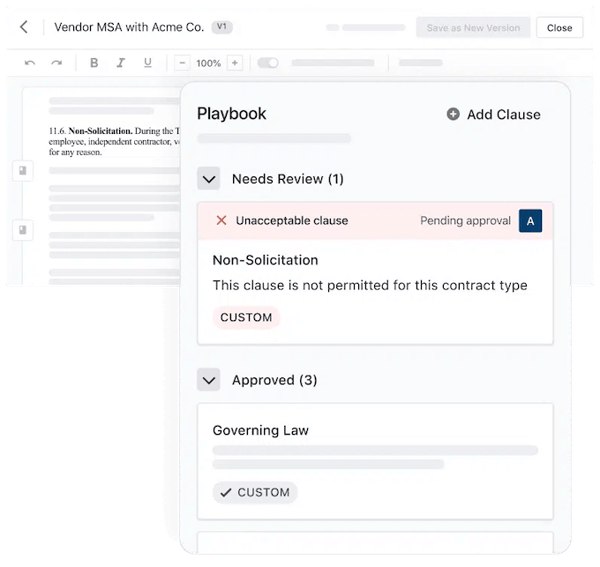
Ironclad automatically flags areas that need review within contracts you receive. Image source
While AI won’t replace a human lawyer, it can support them in speeding up their work to get contracts out the door and executed promptly.
4. Make sourcing easier
Sourcing is an essential part of the planning process for any construction project. Clients often have different needs, meaning you must explore a wide range of vendors to find the exact solutions your clients desire.
AI can help you identify, assess, and select the best partners for any job. Tools like Attri use generative AI to speed up materials selection. It evaluates options based on your parameters, suggests products that best match your requirements, and searches for potential incompatibilities between systems you’re considering.
Speeding up the material selection and procurement process can help you shrink timelines on each job, allowing you to take on more projects with the same size team in the same amount of time.
5. Speed up your on-site work
Keeping your entire team aligned with the many facets of a big project can be challenging. New generative AI tools can help your team work more efficiently.
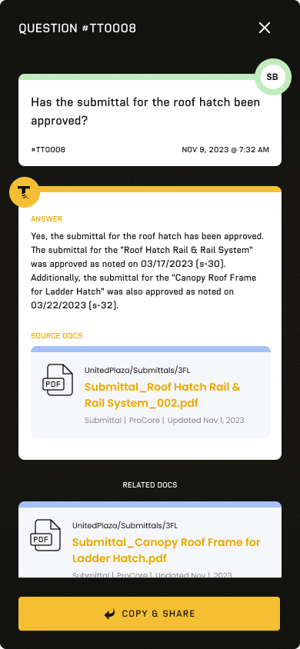
TrunkText helps your team get the project information they need right away. Image source
A tool like TrunkText is designed to scan through the many pages of documents related to each project, helping your team find answers to questions. Whether they’re looking to confirm the status of a permit or need details from an architectural drawing, TrunkText can surface the information in seconds.
Making the most of generative AI in your business
If the generative AI-powered future feels overwhelming, it’s okay to take it slow. There’s no need to overhaul your entire tech stack overnight.
Instead, identify one or two areas where AI could reduce an onerous workload or address a major pain point. Everyone needs to start somewhere. It’s also good practice to stay informed, so make sure you’re prepared to introduce AI to your work structure. As you learn more about the technology and what it can do, you can explore other solutions.
